Dual Language Education for Equity & Economic Development
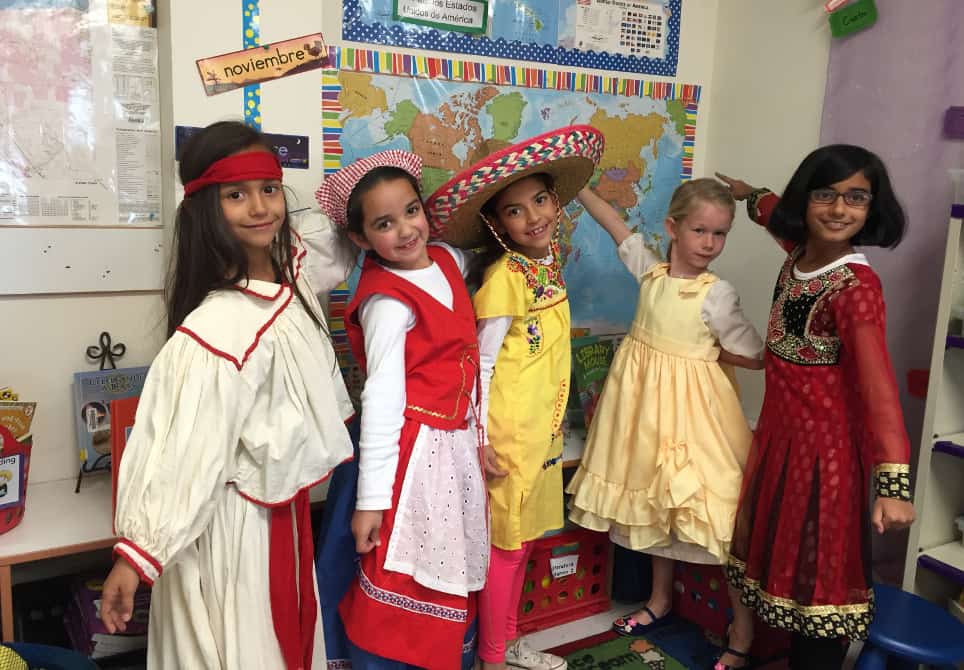
After years of a “test-prep” curriculum and failed attempts at educating English Language Learners (ELLs) with a transitional bilingual education model, the El Paso Independent School District (EPISD) has shifted to an Active Learning framework–technology enhanced project-based learning that aims to engage and inspire every student every day.
EPISD also transitioned its bilingual education program from a traditional exit program (i.e., exit to English only) to one-way and two-way dual language instructional models. While the goal of a transitional program is to create a bridge to eventually move students from their native language to English, the dual language model seeks to maintain academic and linguistic fluency in two or more languages.
Superintendent Juan Cabrera (@jecabrera12) states that the dual language program will not only improve academic outcomes for both ELLs and monolingual English speakers in a two-way model, but he also believes promoting multilingualism is an economic driver and important shift that all districts should consider.
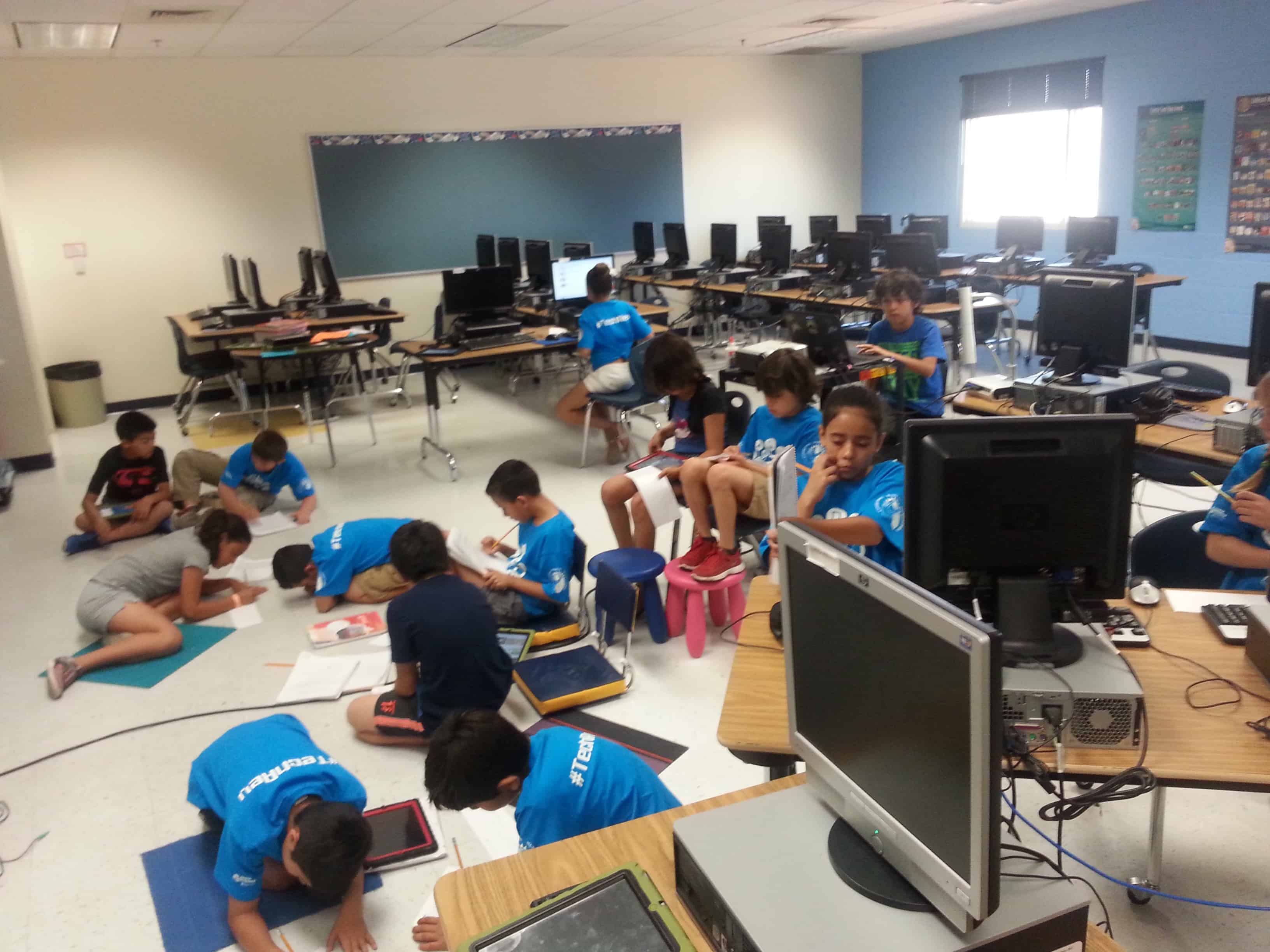 “This is a win-win for all our students as our two-way dual language will allow our students to collaborate and learn together while also dramatically improving the opportunity for success for one of our historically most vulnerable and least successful sub-groups, our ELLs,” said Cabrera.
“This is a win-win for all our students as our two-way dual language will allow our students to collaborate and learn together while also dramatically improving the opportunity for success for one of our historically most vulnerable and least successful sub-groups, our ELLs,” said Cabrera.
“As an English language learner who was able to maintain my native language, Spanish, and also learn English and later other languages, I am a strong believer in bilingual and multilingual instruction,” added Cabrera. “My ability to maintain two languages afforded me the opportunity to live and work internationally; this was a luxury, but in the ever-changing global economy it will become a necessity and dual language and/or multi-language instruction should be implemented to help our students obtain a competitive advantage in the global marketplace.”
Mesita Dual Language Program
Mesita Elementary is a dual language P-5 program on two campuses. It is the successful combination of a high performing dual language elementary with a struggling school with dwindling enrollment.
The Connecting Worlds/Mundos Unidos curriculum is delivered through the integration of dual language immersion methodology and gifted and talented instructional strategies. The program uses a 50/50 design in which students receive half of their instruction in Spanish and half in English in all subject areas. Instruction in both languages is delivered by the same classroom teacher. Noted UTEP linguist Dr. Elena Izquierdo inspired the Connecting Worlds approach.
The Vilas campus (below) serves as an Early Childhood Development Center (serving grades P-1) and shares instructional strategies and the unique Mesita culture where teachers collaborate and compete to improve. 
Laila Ferris has been principal at Mesita for 20 years. “We believe it’s the only program that should be implemented to support EL,” said Ferris. “Why not allow for growth of two languages instead of English only? We use the gift of the first language and help them grow into a second language.”
Ferris has assembled a talented and passionate staff of educators. At least 85% served as student teachers at Mesita.
They value their dual language program and the teacher development role they play through a partnership with UTEP which supports 250 pre-service teachers.
Preservice teachers “receive training and work side by side with great teachers and learn what is critical in good teaching and successful learning so we keep them,” said Ferris. “The idea was that we would build a pool of great teachers–this has proven true!”
Does it work for Spanish learners? Ferris says, “Absolutely!” She thinks two-way dual language is optimal where English speakers learn Spanish and Spanish speakers learn English while serving as language models for each other.
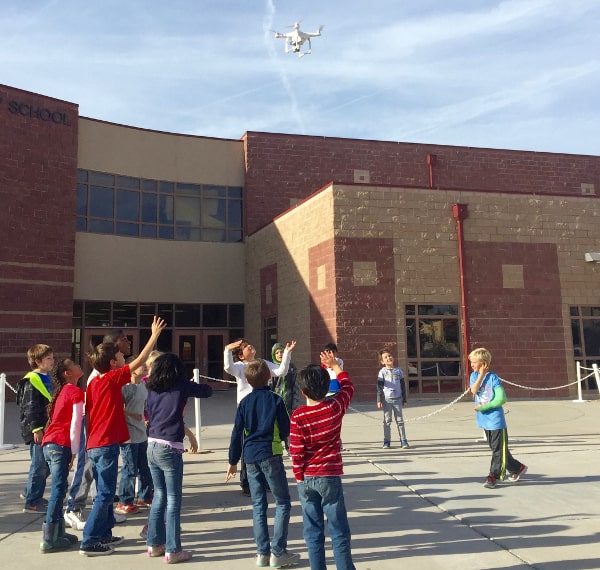 Even in one way dual language (i.e., English learners only), explains Cabrera, the goal should not be English only. “Nothing in the last 25 years tells us we’ve been successful exiting kids from traditional programs,” added Cabrera who started his career as an ELL teacher in California.
Even in one way dual language (i.e., English learners only), explains Cabrera, the goal should not be English only. “Nothing in the last 25 years tells us we’ve been successful exiting kids from traditional programs,” added Cabrera who started his career as an ELL teacher in California.
Cabrera credits his parents (both teachers) for the insight to create a dual language home. Cabrera worked around the world and found his ability to quickly learn new languages a huge asset.
He finds it unfortunate that many immigrant parents want to quickly abandon Spanish, “We often have to visit families to let them know how important dual language is,” added Cabrera. Working as an attorney and software executive in Europe and Latin America, “In my international work people saw multilingualism as an asset and we need that mindset in the U.S. if we are going to stay globally competitive,” said Cabrera.
Leadership is Key
In September there will be almost 12,000 students in the opt-in dual language programs at EPISD. Dual language learning is not just a family option in El Paso, it’s an economic advantage. With almost three million people the combined international metropolitan area, the El Paso-Juarez metropolitan area is home to the largest bilingual-binational workforce in the Americas, perhaps the world. In the Sun City, dual language fluency provides a dramatic advantage in daily commerce and civic participation.
 The EPISD trustees and the El Paso community fully support the expansion of dual-language education as demonstrated by the Trustees approving a strategic plan which specifically calls out “effective bilingual communicators” as a student learning goal. EPISD is one of the few large urban schools in the country to take this approach (student learning goals from the strategic plan are summarized above). Additionally, the trustees support the integration of technology and developing critical thinkers and problem solvers through active learning environments (which includes the opening of 8 New Tech Network schools over the next 3 years).
The EPISD trustees and the El Paso community fully support the expansion of dual-language education as demonstrated by the Trustees approving a strategic plan which specifically calls out “effective bilingual communicators” as a student learning goal. EPISD is one of the few large urban schools in the country to take this approach (student learning goals from the strategic plan are summarized above). Additionally, the trustees support the integration of technology and developing critical thinkers and problem solvers through active learning environments (which includes the opening of 8 New Tech Network schools over the next 3 years).
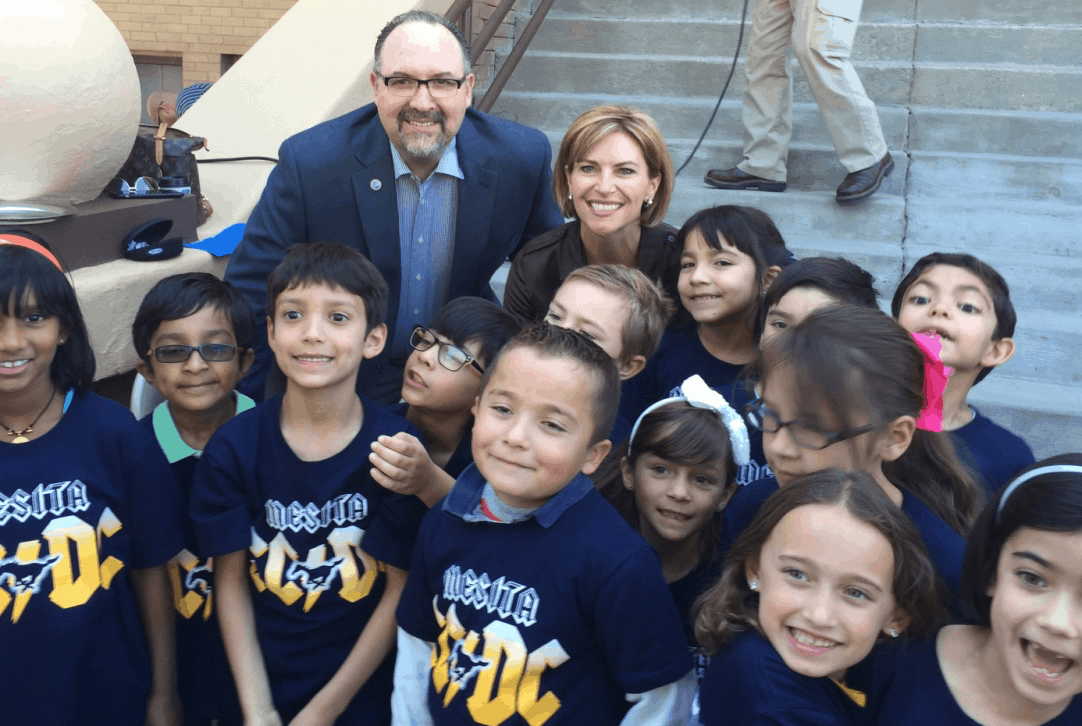
“The vision, belief and support of district leadership has been key,” said Ferris.
Cabrera (right, with board chair Dori Fenenbock at the Mesita-Vilas campus) sees dual language as an economic development driver as well as an equity issue. “Dual language will help all of our children regardless of race, ethnicity or economic status. Our legislators and policy makers need to understand that multilingualism is about creating a competitive advantage for all of our kids, not just about educating our English language learners,” said Cabrera.
In addition to serving as a collaborative training site for other EPISD teachers, Cabrera plans to replicate the Mesita-Vilas language school and create an innovation network of schools (like Beacon Schools in Denver) to help other struggling elementary schools implement the Mesita dual language program. Cabrera’s long term plan is to create opportunities for other districts to learn from and share in the success at Mesita.
The National Picture
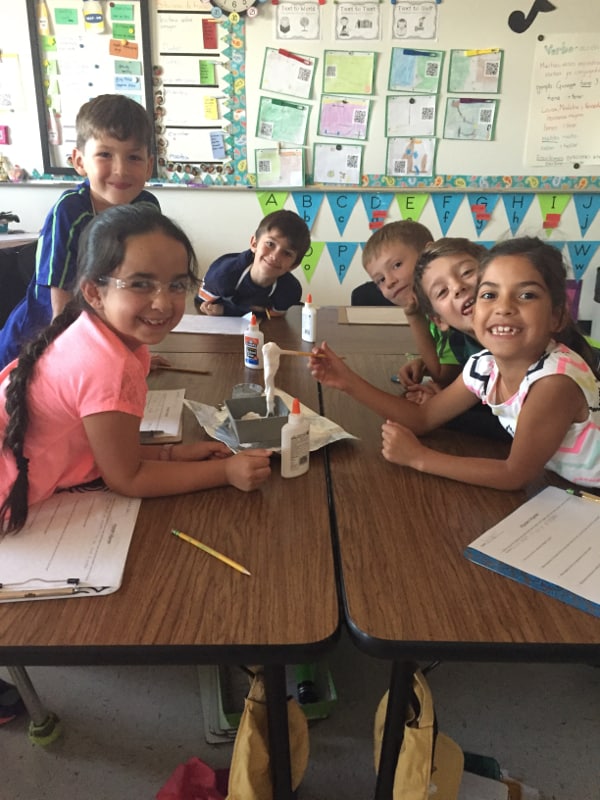 Almost five million students across the U.S. were English Language Learners in the 2013-2014 school year—nearly 10% of the overall student population. By 2030, 40% of all elementary and secondary students could be “language minority students.”
Almost five million students across the U.S. were English Language Learners in the 2013-2014 school year—nearly 10% of the overall student population. By 2030, 40% of all elementary and secondary students could be “language minority students.”
With the 2015 passage of ESSA, the federal government has made teaching ELLs a priority through stronger accountability provisions and the authorization of additional funding.
Secretary of Education John King said, “States have the opportunity to invest in ensuring that all new teachers are ready to work in the diverse settings that characterize our schools, and to see the fact that a child speaks a language other than English at home as an asset rather than as a deficit.”
ELLs are less likely to graduate (63% compared to 82% in 4 years) but there is evidence that given the right supports, bilingual and multilingual students perform better academically over time. Studies show within four to five years bilingual students typically outperform their peers that are in peers that are in one language classrooms.
This Getting Smart podcast featured two Washington state school districts who have innovative plans for supporting English Language Learners and also touches on the importance of getting families, communities and policy makers on board to support dual language education.
There is research to support the strengthening of native language while also learning a new language. The bilingual and biliterate movement is growing, for learners as early as pre-kindergarten all the way to graduating from high school. There is an important role that parents, community members, businesses and policymakers can play in understanding the importance of bilingual education.
A recent report highlights promising tools and strategies for supporting English learners. It recommends that the growing commitment to dual language fluency requires increased investment in language tools and content.
“Dual language immersion programs support both native Spanish speakers and native English speakers in becoming bilingual, bicultural and biliterate,” according to VIF who helped launch Houston ISD dual language. “By learning core content through Spanish language and culture, Spanish-speaking students learn to appreciate their own heritages and English-speaking students acquire access to another language and culture.”
VIF work in Selma North Carolina suggests that “administrative support, meaningful student and teacher experiences and parent engagement. Effective communication between administrators, staff and parents can lead to greater understanding and support for students and their diverse needs; the integration of these factors fosters an environment that promotes academic success for all students.”
For more, see:
- Can Dual Language Programs Support English Language Learners?
- 7 Best Listening Resources for Language Learners
Stay in-the-know with all things EdTech and innovations in learning by signing up to receive the weekly Smart Update. This post includes mentions of a Getting Smart partner. For a full list of partners, affiliate organizations and all other disclosures, please see our Partner page.





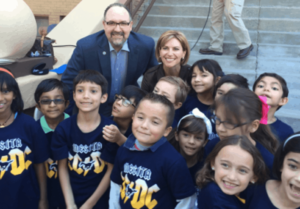


Norma Romero-Komlofske
This is a very empowering article! As educators, we should promote a positive view of our traditions and culture, our language and heritage. By accepting and encouraging our home language, we are telling all these young kids that's ok to speak a different language, and English too! Great article!
Elena
What a great story to share! Dual language is definitely World Class Education! It is all about leadership, at many levels. It opens minds to new ways of thinking. With changing demographics, dual language provides bilingualism/biliteracy/multiculturalism and an advantageous role in the global economy. Genuine leadership inspires a profound understanding of diversity as children, teachers, parents and the wider education community learn, work, and play together. It embraces the value of knowing more than one language and expects nothing less than a rigorous curriculum delivered and learned through two languages. As a result, communities, such as the Mesita community in EPISD, have not only implemented successful dual language education, but as a result of their leadership, they have accomplished the more difficult task - sustainability!
Sandra
I am elated in knowing that throughout its district, EPISD has taken a step forward with the September 2016, implementation of the Dual Language Program and in doing so they show that there best interested is in students' success. Students are now having this opportunity to become truly bilingüal biliterate individuals. The is an opportunity that parents should not let it pass by. As parents we want to equip our children for a bright future and this is the moment. Collier & Thomas (2012) mention that "dual language is the most powerful school reform model for high academic achievement," (p. 6). I believe that EPISD will definitely provide our children for a linguistic diverse global world with the implementation of this program.
Sandra
Mayra Perez
I really enjoyed reading this article and reading about EPISD and the success they have had with the Dual Language Program. I am a fifth grade Dual Language teacher and I always try to emphasize to all my parents the benefits that their bilingual and bi-literate child will have. I am very proud to be part of this incredible program and I hope that it spreads throughout our country. I think that for some reason the United States has always had a very closed minded view on bilingualism. We always expect everyone to speak English but we can't be bothered to learn some else's language. It is time to open our eyes and realize that our world is changing and if we want our children to be able to compete in this new global economy, they must be bilingual or multilingual. I hope this message gets spread widely so that people out there understand the importance. I would also like to give a big "shout out" to Mr. Cabrera for his support of the Dual Language program and for his efforts to spread the word!
Alejandra
I was able to do my UTEP student-teaching in Mesita Elementary School and I can say that the way they work with the dual program is the best. English monolingual children develop Spanish as a second language at an early age while still growing in English. Spanish monolingual children develop English language while enriching their first language. All children learn appropriate academic skills while developing their bilingual proficiency. In addition, students develop social skills that allow them to make friends in a multicultural and multilingual world. Also, the teachers know how to implement the recommended Spanish curriculum along with the other classes. Through a carefully constructed progression and interactive approaches, children learn academic content while developing their respective languages. I wish we had more schools with the dual program as I have witnessed how students undertake new positive expectations for their life.
Noe
Working link for HISD Dual Language Programs
http://www.houstonisd.org/multilingual
Noe
In my opinion I believe that EPISD’s transition from traditional bilingual education exit program to one-way and two-way dual language instruction models is a great move!! In my current research as a graduate student at the University of Texas at El Paso I have learned that Dual Language programs not only teach English learners English, but it also closes the large achievement gap that exists between native English speakers and English learners.
As Collier and Thomas (2012) tell us, English learners enrolled in the dual language programs can fully close the gap in second language in six years if the program is really well implemented, making 1 ½ years’ progress each year (in comparison to the progress of native English speakers on grade level, who only need to make one year’s progress to stay on grade level.
This only supports what superintendent Cabrera stated about dual language about improving academic outcomes for both Ells and English speakers while also promoting economic drive via multilingualism. Here in Houston where I live, the Houston Independent School District (HISD) is already trying to implement the dual language program in a lot of its schools. They recognize that in order for their students to compete in a global market they must have access to a bilingual education and a world-class dual language bilingual program that graduates students who are fully biliterate in English and Spanish (HISD, 2016). HISD started their Dual Language Program in 1994, expanded in 2012—to 14 elementary schools, 2 middles schools and one high school, in 2014-- 14 additional elementary schools were added, 2015 – 22 elementary schools were added, 2 early childhood centers and one middle school for a total of 56 campuses with Dual Language. In 2016—the expansion included 10 elementary schools, one Early childhood center and one middle school, the Dual Language Campuses total 68. For more information, you can visit their page at: http://www.houstonisd.org/multilingual. As anyone can see the Dual Language programs are working and are closing the education gap and the students are passing state test, both English learners and native English speakers. If the Dual Language programs would not be working there would not be such an expansion as the one seen at HISD. As superintendent Cabrera stated, “multilingualism should be seen as an asset the way is seen internationally –and we need that mindset in the U.S. if we are going to stay globally competitive.”
---Noe
Elizabeth Miranda
Change is good, I’m glad EPISD has made the wise choice of implementing a Dual Language program that will help the children from the community attending public schools succeed. As a bilingual certified educator I see the importance for students to have a strong foundation in their first language as they continue the second language acquisition making them bilinguals. As we know technology has made people from different countries accessible. We see other countries teaching their students two or more languages in order to communicate with the world and we need to move in the same direction. Our students here in El Paso should be able to communicate with others using not only the English Language. With the changing global economy employers will need employees who speak more than one language, providing better pay and overall better opportunities for a successful life. The Dual Language Programs provide students with a wealth of cultural knowledge as they maintain their heritage and identity; these students will be building bridges that will enable them to use their bilingualism, social and critical-thinking skills. I think we need to continue educating our community and our parents of the opportunities and benefits that come when students are enrolled in Dual Language Programs. Learning two or more academic languages will open a window of opportunities for our children providing them with a successful future.
Monica P. Rodriguez
I am an advocate for the world to see different cultures and languages. As educators, we definitely need to promote different languages and encourage our children to learn about diversity. It might not be easy to do it by myself, but if many educators gather up and support our dual language programs, many positive things can arise. EPISD has taken the great opportunity to provide these programs and I am extremely excited to keep seeing the results. Let us speak up and spread the word! Wonderful article!
Juan José M.
As a 7th grade History teacher in California, I routinely see the need for these dual immersion programs. Students have not developed their English, while slowly losing their primary or native language as well. I think that this program demonstrates how successful we can be to serve the needs of ALL of our students, not just monolingual, or emerging bilingual students. These programs benefit all students regardless of their ethnicity, socioeconomic status, or special needs. I feel that as a nation we are on the right track with the federal government making it a priority to teach our emerging bilingual students. While the evidence demonstrates that these dual immersion programs are the most effective way to teach these students, they also provide an opportunity for native English speakers to develop an asset that will be necessary in our ever growing multicultural world.
Johanna
Awesome article, I really enjoyed reading it and the most important part is the fact that this is my school and it is great that what Mesita has been doing for such a long time now is implemented across the District. We have leadership and this what really makes the difference in our program and the quality of teaching that is implemented in my school! Great article!
Claudia Cabrera
This article explains the research and understanding of the history behind bilingual education and its existence in our schools. The leadership, in this case Superintendent Cabrera, has an understanding of what Dual Language education is and what it has to offer our students. He has a vision. A vison of where we need to go with a bilingual program that has been criticized and misinterpreted. This vision focuses on creating an academically successful and well-rounded child. The article captures what is going on behind the scenes at EPISD. It is the hard work and determination of leadership, the business community, Utep, principals, teachers, parents and students that are creating a momentum towards supporting the development of second language acquisition and academic excellence. As a result, this will create confidence in both our English language learners and our native English speakers. As stated by Collier & Thomas (2012), “Students speak proudly of their academic accomplishments, confident in their growing bilingualism and access to a greater world through their cross-cultural competency” (p.5). Our English language learners deserve nothing less than a Dual language program that will close the achievement gap in all content areas. As Collier and Thomas (2012) states, “Only dual language programs that provide long-term, enriched teaching of all curricular subjects through English learners’ primary language as well as acquisition of English as a second language though all curricular subjects completely close the full achievement gap when tested on difficult English norm-referenced tests that show the full extent of the gap” (p.94). Our students deserve nothing less than the opportunity to compete with others around the world. Dr. Izquierdo is right, with this vision and the support of the community to do what is right for our students, we will create a Dual Language program that is sustainable!
Maria
This was a great article. I was a student of the EPISD and I am happy to see their accomplishments in moving towards the Dual Language program. It is wonderful to see how the Superintendent support the Dual Language program and understands how important it will be for the future of each student. As a dual language teacher, I have always encourage parents and students that knowing more than two languages it empowers you. Our students need to have the opportunity to become biliterate, bilingual and bicultural. Great Job EPISD!
Andrea Aguilar
I am so proud to be part of this tremendous movement, Dr Izquierdo deserves all my respect. Dr. Izquierdo is a really hard worker who has promoted this wonderful programs. I am currently working as a dual language teacher I am excited to tell you that many children are receiving the positive benefits from this programs .Our district’s Dual Language program is a 50/50 model where students will receive instructional in English and Spanish using a two- teacher model. I am very excited in teaching my students how to read, write, and learn about various cultures as I teach them the enormous Spanish academic language. Me siento muy feliz por ser parte de esta hermosa comunidad, arriba El Paso, TX.
Edna
EPISD Superintendent Juan Cabrera explains that being bilingual is luxury but also notes it will become a necessity as the global economy continues to change and the global marketplace becomes more competitive. Dual language education provides various opportunities not only for English language learners but for native English speakers. The implementation of dual language immersion methodology and gifted and talented instructional strategies give dual language education a whole new spectrum of opportunities whether they are academic, professional or economic. The El Paso-Juárez area is growing and becoming more important each day not only for the business market but as a place of educational opportunities. I think it would be excellent if other El Paso area superintendents and principals gather with EPISD district officials and educators to consider implementing dual language programs and the Connecting Worlds curriculum in their schools. If this occurs, it is possible for the city of El Paso to become one of the most prominent cities of the country. We need take advantage of the languages students bring to the classroom and use them to create bridges to "connect worlds."
Mariah
Thank you for sharing the inspirational and necessary changes for the U.S. educational system. The EPISD is a promising example of what "world class" education looks like. Additionally, thank you for sharing a broader definition of Dual Language Education, an"Active Learning, framework–technology, enhanced project-based learning that aims to engage and inspire every student every day." Both students and staff at Mesita Vilas Campus have such a learning advantage, and the program design of 85% retention for student teachers who transition to permanent staff is a creative and cost effective way to shape, develop and prepare DL educators. This additive learning environment allows students to become multilingual, to naturally acquire English or L2 while preserving heritage language or L1, all the while reaching high academic competency in all content areas. Thomas & Collier (2012) demonstrate that DL programs are the only bilingual educational programs that fully close achievement gaps; programs that encourage students to celebrate diversity and learn harmoniously. I hope DL programs become not only a national trend, but a requirement for the public educational system in order that all students are equipped to participate in globalized societies. Phenomenal article!
Bertha
It is such a beautiful thing to see a district that shows such great support for dual language education! The support of district leadership is detrimental to the success of dual language and it is clear that EPISD has it. The children of EPISD will be receiving the best education possible and the benefits will go far beyond the learning of languages. These dual language students will be bicultural, bilingual and biliterate and as a result, they will be ready to face challenges at a global level.
Jaime Rico
When reading the article about "Mesita Dual Language Program" and analyzing the comments of managers, I confirm that dual education programs contribute in many ways to the community they serve. Indeed, I think, as a graduate student program Master of Education, that dual education programs are win-win programs and it is very appropriate name of "Connecting Worlds / Mundos States". Indeed in a recent assignment I commented on the need to educate our children on the idea that citizens of our country, are those of open-mind, tolerant, respectful and willing to share and receive multicultural knowledge and experiences. Citizens to build bridges of understanding and at the same time destroying walls of ignorance and intolerance. A program like Mesita certainly will achieve success by having that vision.
I'm glad to know that EPISD is leaving behind remedial programs and has entered a new era.
Minea
It is great to know that not only are initiatives that support dual language programs being strengthened but being reinforced with educational technologies. I admire the way the community and the EPISD is being so proactive at supporting the needs of the student population. I always think about how important it is to keep up with 21c. learning and integrate it into the curriculums. Dual language programs will certainly boost the level of cognitive ability in the students if they have adequate learning tools. Additionally, the development of active learning environments is essential to the learning of languages and again, the most progressive educational systems are strongly adapting active learning as the main teaching mode.
Wonderful article!
Minea
Michelle Ramirez
Awesome article, is so great to read about the comeback EPISD has made for students after the bad managing they had made with ELLs. The change they had made from transitional bilingual programs to a two-way, one-way is exceptional. Dual Language programs has many great benefits, like becoming bilingual, biliterate and multicultural as well as closing GAPS. Which has been one of the big issues many bilingual schools have encounter. As well I enjoyed reading all the personal experiences shared, on becoming a global community. It also keeps promoting the parent involvement by sharing all the accomplishments Mesita Elementary has gained for EPISD.
Alexis Castaneda
This was a great article to read. It always makes me feel good when I see my hometown moving in such a positive direction. It is great to see how far we have come in that aspect. Effective bilingual programs are great because they promote cultural and linguistic diversity, which in turn increases the potential for academic success. I believe we have to do as much as we can to make students feel accepted and help them believe that they can achieve so much. We have to make them realize their fullest potential.
MarioGarcia
Wow!! It seems that these programs are giving teachers the answer to many sleepless nights and worries about the future of our ELLs. Our border city is a very good example that not only learning a new language is a necessity but also the importance of developing our home language. In our classroom we see how many of our students are not able to fully communicate in any of the two languages that they have been exposed. The biggest culprit of this situation is called English Submersion Program. This program has created fear between teachers, parents, and students as it focus in unjust and unrealistic ways of measuring intelligence. One-way and Two-way Dual Language Programs provide ample opportunities for all students to develop in an environment that truly prepares them to positively participate in our society. Administrators and advocates of DL Programs invigorate us teachers in fighting for equity for all of our students.
Claudia
FYI...The VP pick for the Democratic party is fluent in Spanish!
Gabriela Jimenez
Definitely something that needs to be shared with the community and with others across the country. I am glad to see that articles are being written about these types of education programs so that parents can read about them and look into them on their own. As stated in the article, parents can cause these programs to grow and even more so once they stat collaborating with administrators and teachers as well. Keeping others informed and keeping oneself informed is a powerful tool! Our world is changing rapidly and we have to adjust ourselves to grow alongside with it. As the superintendent Juan Cabera mentioned, multilingualism is a huge asset in todays economy.
Denisse
I am currently a bilingual education master student and seeing articles like these about El Paso and the progress that Dual language education is making around there, motivate me to one day return to my hometown. El Paso and Ciudad Juarez have a unique correlation that makes this border region really special. Taking advantage of the “largest bilingual-binational workforce in the Americas,” we can make the region stronger than ever. By allowing students to become academic, linguistically and culturally fluent in both languages, we are empowering our students to become active global members of society. While two-way dual language models allow students to keep their primary language, like the one we see in Vilas elementary school. Great article!
Casandra Noriega
This was an awesome article, I really enjoyed reading it I could also attest to it because I did my internship in my undergraduate courses and it is great what Mesita has been doing for such a long time now and is implemented across the District. Also the fact that Mrs. Ferris has been there for 20 years and developing it sense then. The fact that they have great leadership is what is making a real difference in their program and the quality of teaching that is implemented. This was Great article to Read!
Corina G
The transition from early exit programs to dual language was long overdue here in the El Paso/Juarez border and I am glad to see that it is finally happening. As a parent, I am thrilled to see that my daughter will have better learning opportunities than I did, all because of great educational leaders like Superintendent Cabrera and Dr. Izquierdo. As a graduate student in Education and a middle school teacher, I realize the importance of putting knowledge into action and it seems like Bilingual Education research is finally having an impact in our city. Moving forward, teachers, parents, and leaders need to work together to overcome any challenges that might arise so that this transformation prevails.
Marina Sifuentes
This is a great article, something that should be used in parent meetings and also staff development for teachers. It is very important that the community knows the benefits of the Dual Language programs, and I am glad that the principal, teachers and EPISD Superintendent are this passionate about the program. More promotion should be done, and advertise the middle schools and high schools that still participate in the dual language instruction. This would greatly benefit the kids that come to El Paso after 5th grade and still could benefit from DL instruction. Culture, heritage and a brilliant future for our bilingual and bi-literate children who in turn could become the next DL teachers. Great article, awesome group of people, and amazing program.
Tanya D.
This was a great article! As a graduate student and future educator I am glad to know that there are administrators like Superintended Cabrera that support Dual-Language programs. It does make a difference when you have administrators who belief in the DL program. I am glad that people are taking notice and realizing that Dual-Language programs are much better than transitional programs. All students should have the opportunity to learn in two languages so they can become bilingual, biliterate, and bicultural. Being bilingual is very important and I am glad that EPISD along with the other schools mentioned in the article are making a difference in the students learning process.
Dr. José Medina
I am so very excited that El Paso ISD is on the road to full dual language programming as an additive way of providing support to our emergent bilingual students! As the Director of Dual Language at the Center for Applied Linguistics in Washington DC, but more importantly, as a native El Pasoan and UTEP graduate, I am reminded of the great educational strides that have been made and continue to move forward in El Paso area school districts.
Yo tengo la oportunidad de dar apoyo a distritos escolares en todas partes de los Estados Unidos en los cuales hay implementación de programas duales. Y hay programas duales fabulosos en todos los Estados, pero para mi, es un gran honor en leer las maravillosas cosas que están pasando en EPISD.
Moreover, knowing Dr. Izquierdo and her passion and knowledge regarding dual language education, as well as understanding personally the impact that UTEP has on future educators, I am left with only optimism and hope for the bright future ahead for El Paso area emergent bilingual students.
In the interim, please know that the Center for Applied Linguistics is working feverishly to move forward and support dual language programming around the nation. Please reference the Guiding Principles for Dual Language, a free resources that most dual language programs use as a guide and tool for continuous program improvement. You can download the document for free here: http://www.cal.org/twi/guidingprinciples.htm
Un fuerte abrazo desde Washington DC! Su servidor y hermano de la Ciudad de El Paso, José